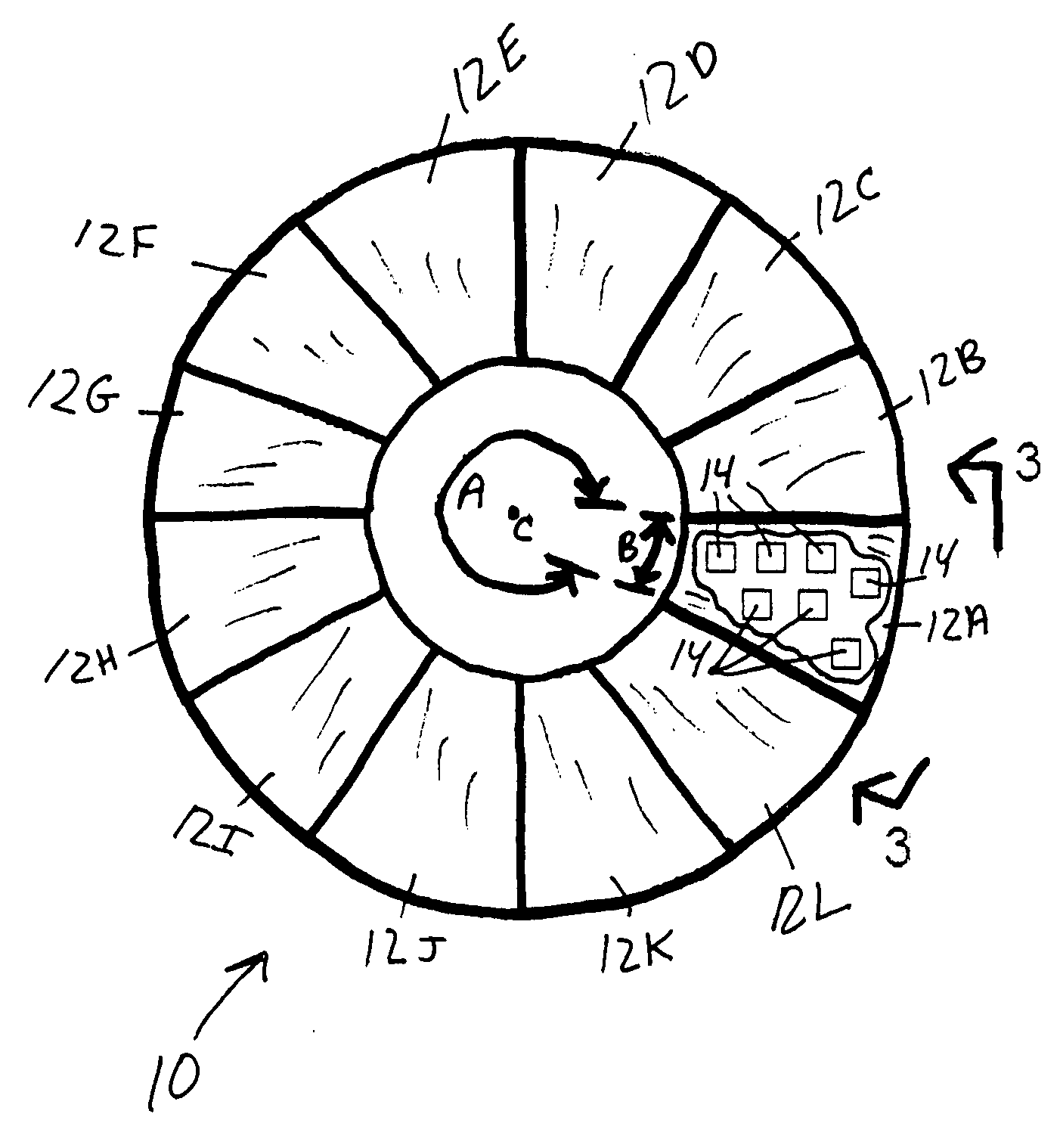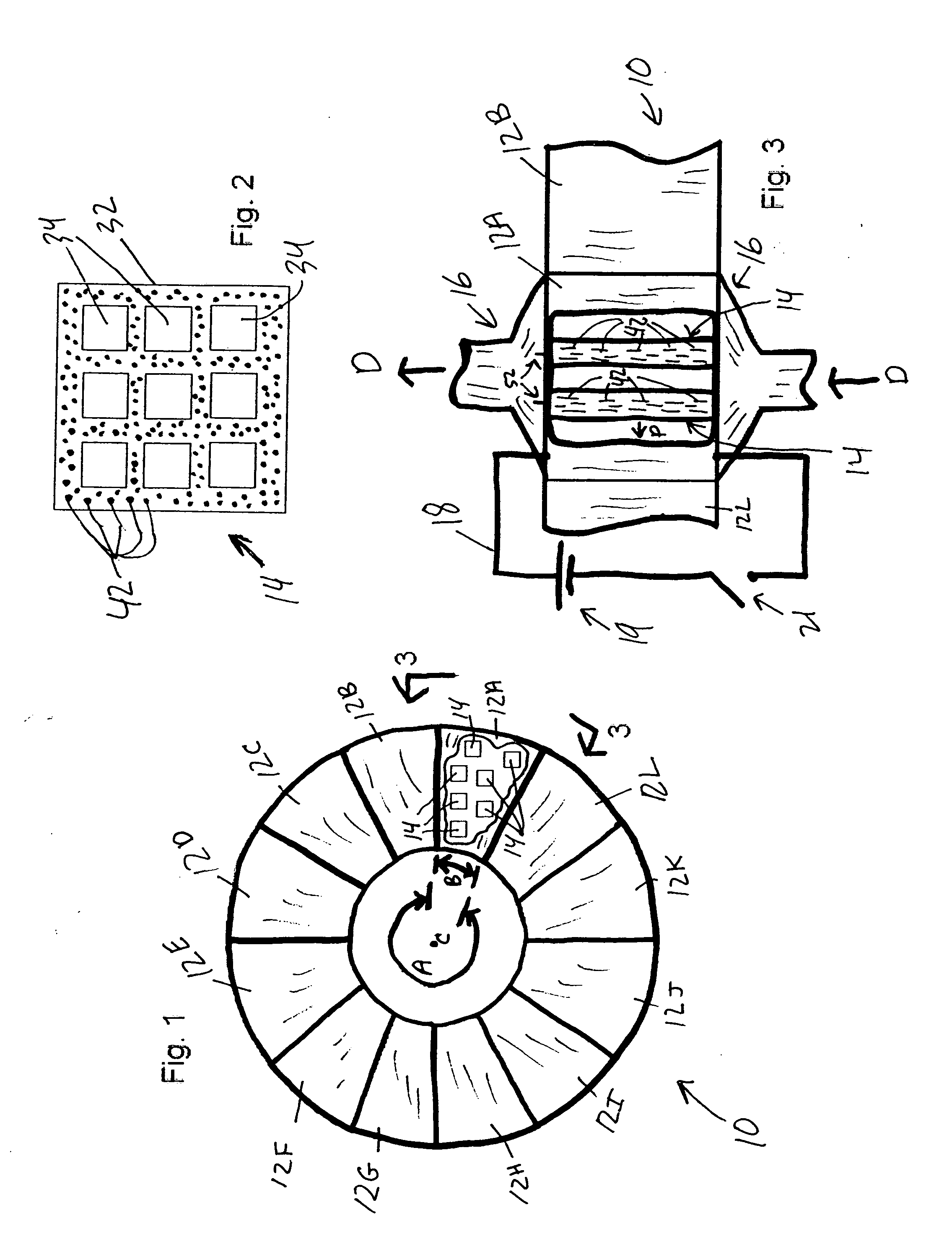Rotary adsorbers for continuous bulk separations
a bulk separation and adsorption technology, applied in the direction of separation process, dispersed particle separation, chemistry apparatus and processes, etc., can solve the problems of limiting their use, difficult, even on a lab scale, to obtain uniform thermal activation through monoliths, etc., to achieve more effective and efficient bulk separation, hinder adsorption of target species, and maximize the flow of electric current
- Summary
- Abstract
- Description
- Claims
- Application Information
AI Technical Summary
Benefits of technology
Problems solved by technology
Method used
Image
Examples
Embodiment Construction
[0028]A rotary adsorber wheel according to the invention comprises an electrically-conductive adsorbent in the physical form of a monolith having internal passageways, notably a honeycomb or other suitable form, configured as a wheel. For most applications, the adsorbent in the honeycomb includes largely an activated carbon material, notably activated carbon fibers, bonded with a suitable organic or inorganic binder. A fluid stream, typically air, containing the target volatile organic (or inorganic) species to be separated is passed through the adsorption zone (typically 330 degrees of arc) of the rotating wheel, where certain of the species are adsorbed on the adsorbent. The porosity and surface chemistry of the adsorbent are tailored to the capture of specific chemical species. Species not adsorbed pass through the wheel, thereby achieving separation. Further separations on the species discharged from the adsorption zone could be achieved by passing the effluent gas stream throug...
PUM
| Property | Measurement | Unit |
|---|---|---|
| temperature | aaaaa | aaaaa |
| diameter | aaaaa | aaaaa |
| diameter | aaaaa | aaaaa |
Abstract
Description
Claims
Application Information
 Login to View More
Login to View More - R&D
- Intellectual Property
- Life Sciences
- Materials
- Tech Scout
- Unparalleled Data Quality
- Higher Quality Content
- 60% Fewer Hallucinations
Browse by: Latest US Patents, China's latest patents, Technical Efficacy Thesaurus, Application Domain, Technology Topic, Popular Technical Reports.
© 2025 PatSnap. All rights reserved.Legal|Privacy policy|Modern Slavery Act Transparency Statement|Sitemap|About US| Contact US: help@patsnap.com


